William Henry Crafts Gorgeous Pocket Knives From Rare Materials
The brand’s top-shelf blades feature shipwrecked wood, Swiss gems and dinosaur bones—and can cost up to $70,000 apiece.
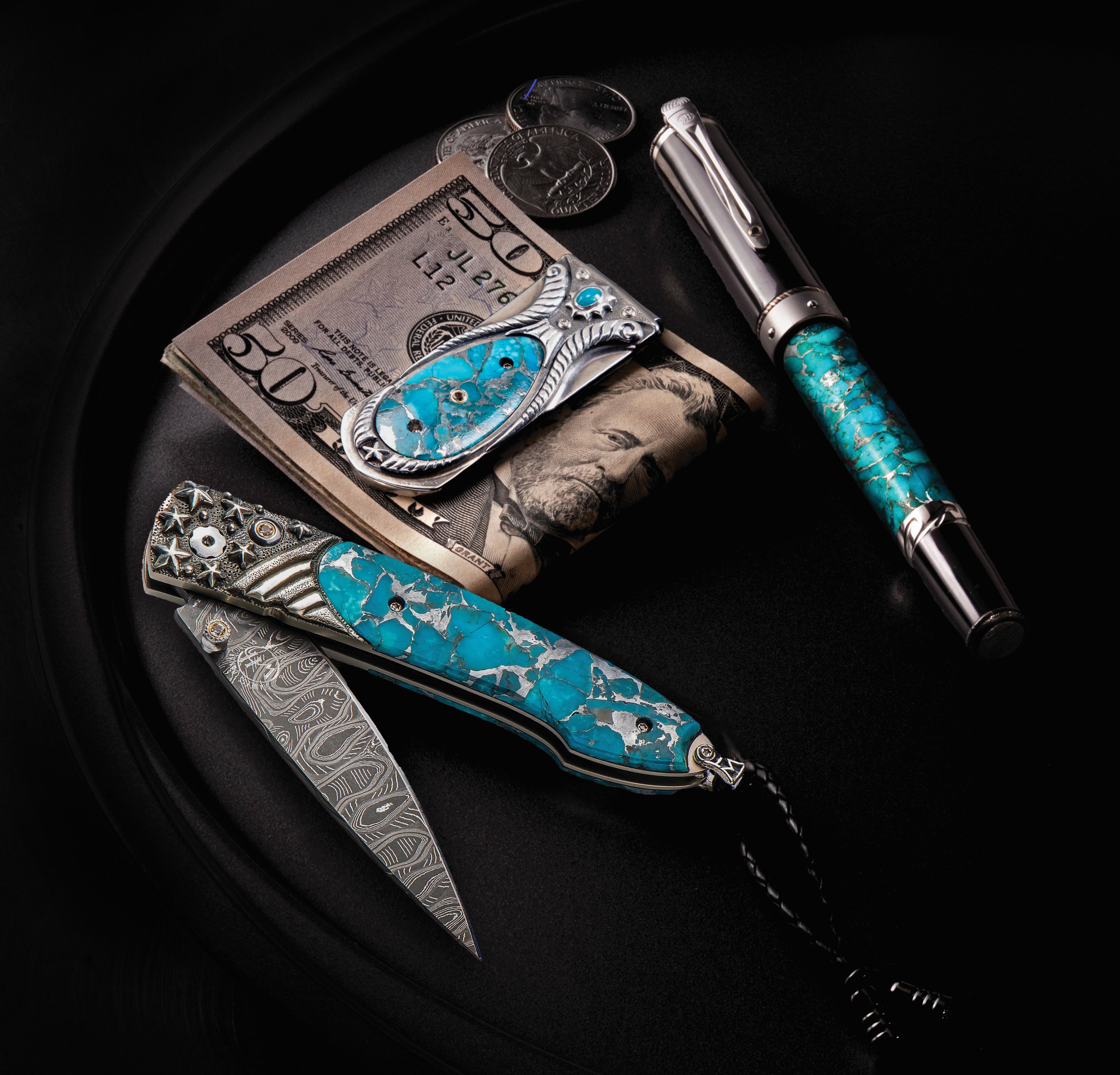
The best ideas are sometimes born out of an unexpected crossover in a Venn diagram, so to speak. Take the pocket knife, a humble and downright useful piece with real-world origins in the field. Trusty versions packed with multi-tools crowd the market, but William Henry’s USA-made pocket knives, and a full array of daily-carry essentials, blur the line between useful, stylish and downright luxurious in a way few brands can achieve.
The Pacific Northwest brand boasts nearly 30 years of knife-making heritage, having been founded in 1997 by custom knifemaker and musician Matt Conable in northern California (the company moved to McMinnville, Oregon, in the early 2000s). Conable recognized the difference between custom one-off knives and pieces produced in larger quantities, and decided to take advantage of both old-world knifemaking hand craft and modern technology to create pieces that are wholly singular and eye-catching.
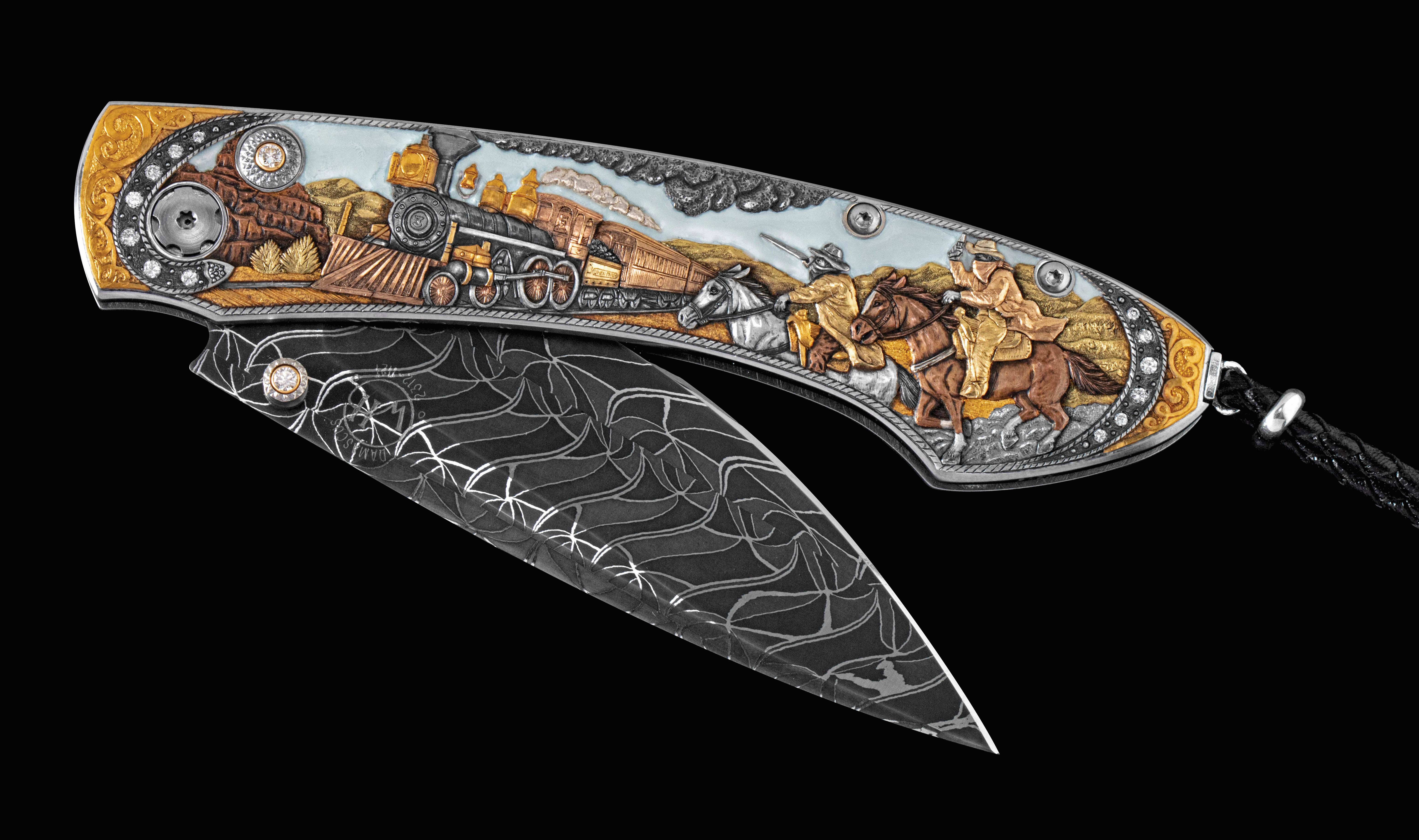
From the outset, William Henry knives, complete with beautiful engraving and ornamentation straight out of a Lord of the Rings film, gained a devoted following and appealed to collectors. Damascus steel is a particularly notable material across the William Henry product line, with vivid colors and embellishments finishing each knife in an extremely handsome fashion. The most difficult-to-make versions with the most painstaking ornamentation and precious materials can cost up to $70,000 apiece.
“The material combinations within an edition may have been the same, but the organic nature of each piece feels completely unique,” Christian Davis, the brand’s vice president of marketing and brand development, tells us. This “superlative functional art,” as the company notes on its site, represents the fusion of form and function in rugged-meets-refined fashion for the Oregon company. Davis notes that the company’s “design language” now also extends to refined and rarified categories like handsome jewelry with a touch of rock star edge, and a quietly luxurious look and feel.
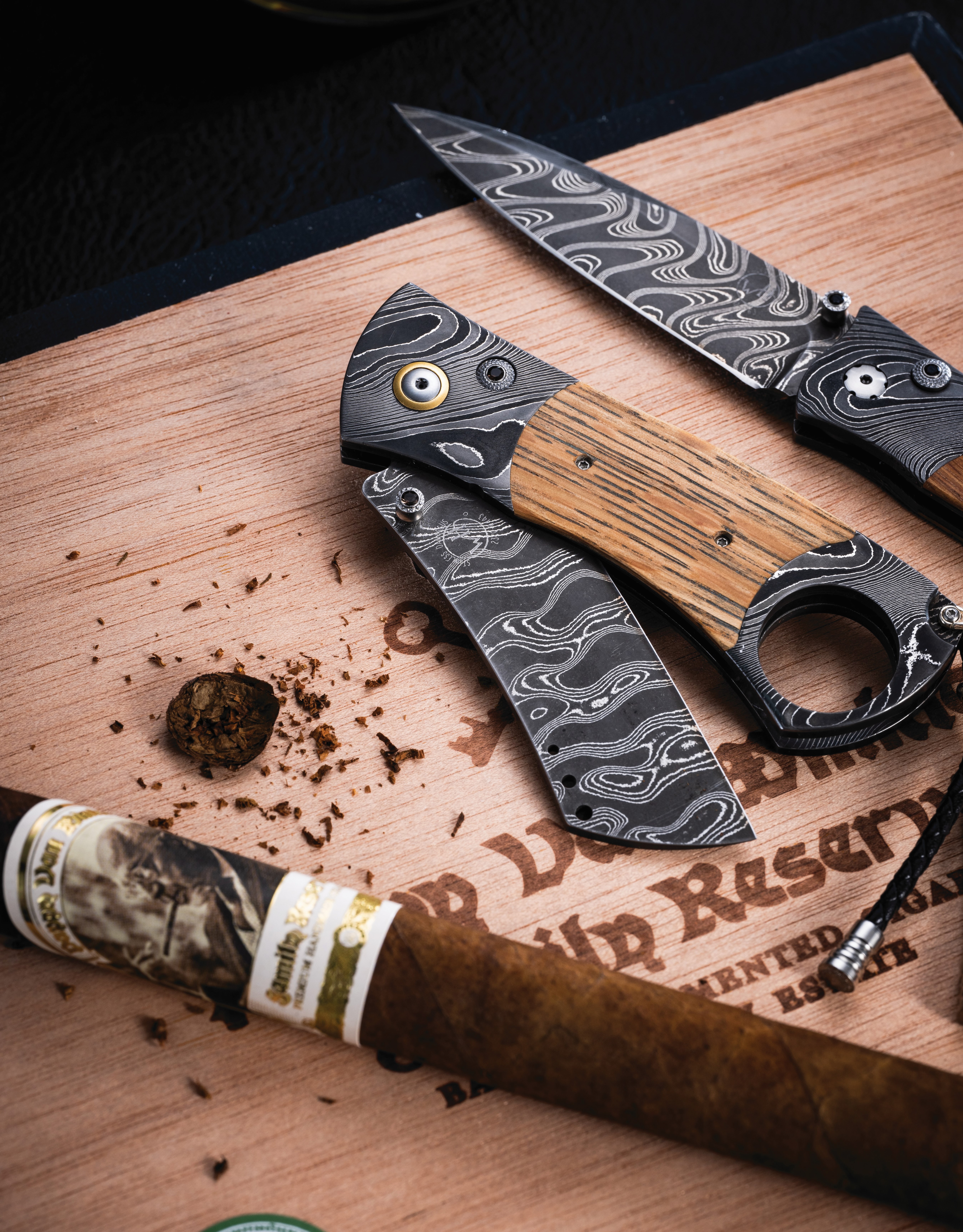
They don’t view themselves solely as “USA-made,” as the brand works with artisans across the world, using materials like Swiss gems or sterling silver carved in Bali. Each element is then shaped, fitted, assembled and finished in Oregon. “It’s really a global network of artists, craftspeople and material sources that gets each piece from concept to fruition,” Davis says.
“Our studio team couldn’t do it without them, and [vice versa]. While its pocket knives have served as a backbone of the brand, high-end chef ’s knives, cigar cutters and even watches are a growing focus, Davis tells us. It’s certainly not hard to see what makes William Henry knives so distinct and frankly, downright beautiful: Exceedingly rare materials, including ancient fossils, elevate William Henry knives, and the company even produces knife inlays made with important historic materials, such as a B12 Pearl Harbor knife, fashioned with wood from the U.S.S. California.
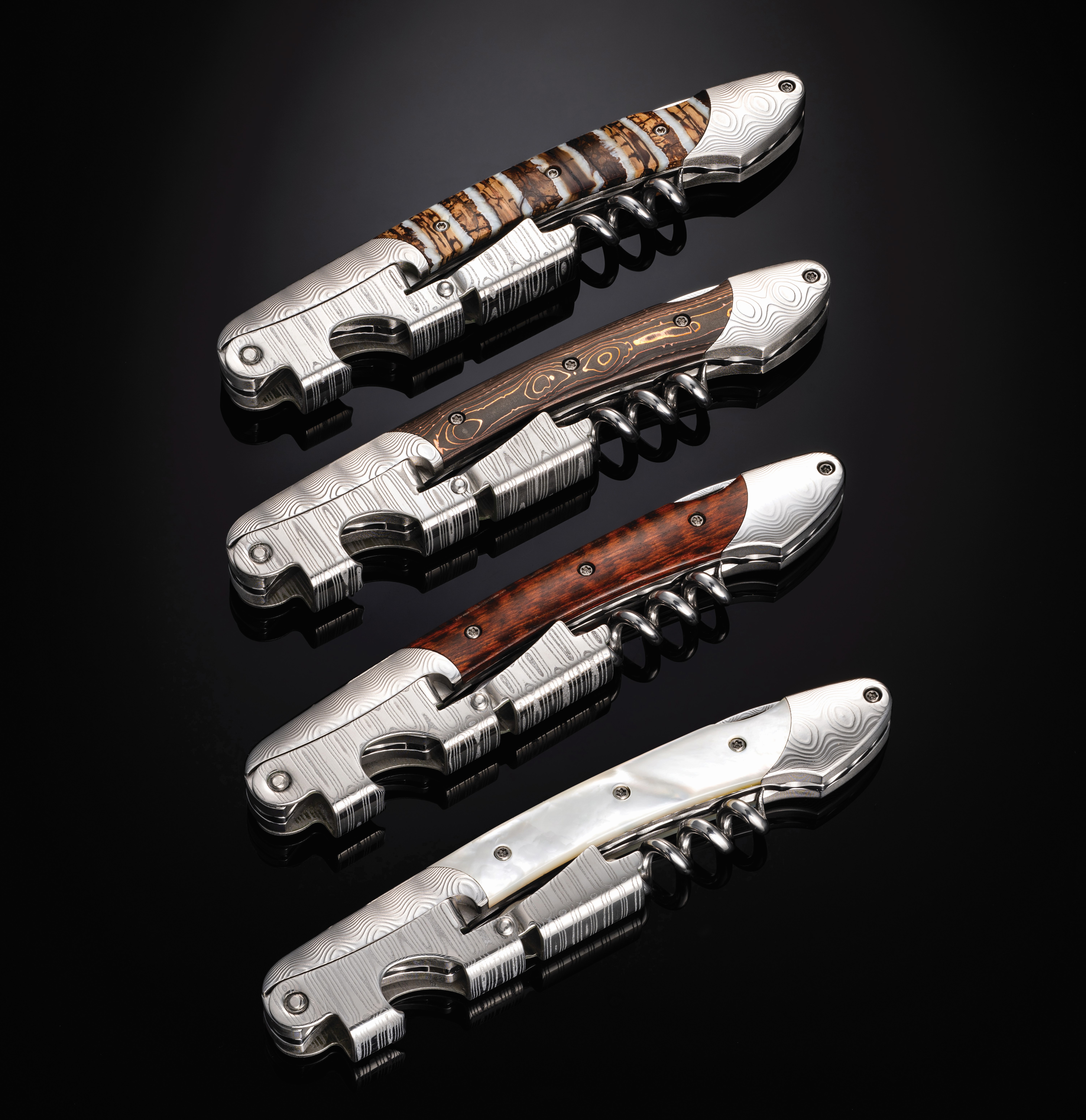
Knives featuring dinosaur bone, wooly mammoth tusk or even meteorite are also collector favorites, Davis says. In the past, the knifemaker has even worked with wood from both the White House and Yankee Stadium. Your average Swiss Army knife, these are not. And because the company’s knives are nearly all limited-edition offerings, it can be difficult to keep up with demand—and indeed, sometimes difficult to get a sense of what’s most popular. Scarcity drives demand, after all, but a series of knives made with wood inlays from covetable Pappy Van Winkle bourbon barrels have proven exceedingly sought-after, Davis says.
The Pacific Northwest is a fitting home for the company, with its adventurous roots, its strong connection to otherworldly nature and a need for functional pieces that stand out from the pack. “The [Pacific Northwest] and craftsmanship have long been intertwined, and being surrounded by a culture of pride for one’s craft really shows at our studio and in our work,” Davis says. “It also doesn’t hurt to be in the heart of Oregon wine country, where there is a global draw for creators and appreciators of nuance, story and attention to detail.”
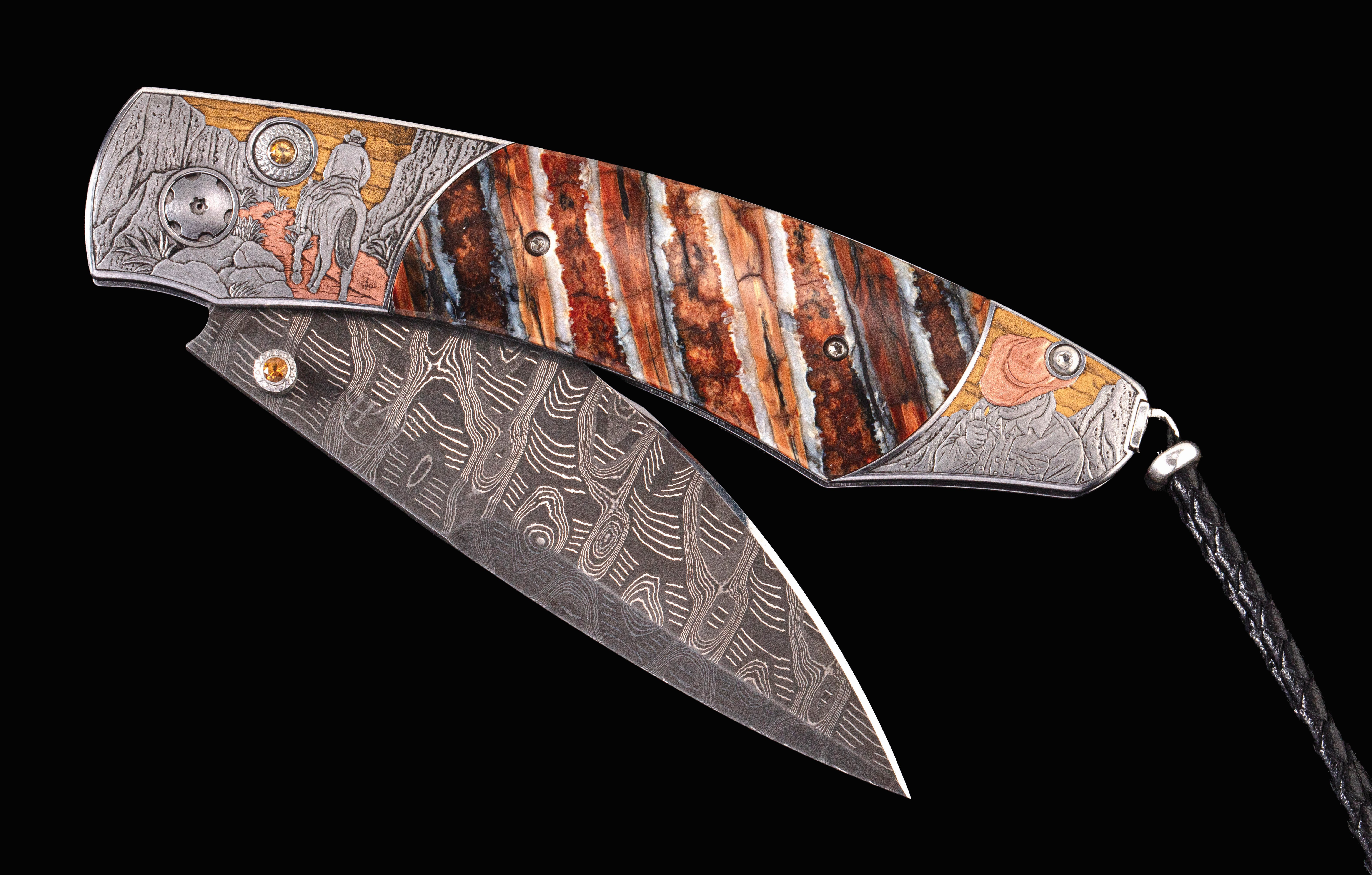
Everyday-carry (EDC) gear is a category undoubtedly on the rise, Davis notes, and it’s not hard to see why. “In part, I think it has to do with the fact that we all realized that there are a lot of opportunities to turn everyday activities that are often overlooked into acts of ceremony,” he says.
“Opening a package with a pocket knife that you are proud of and look forward to using is a whole lot more fun than [grabbing] scissors from a kitchen drawer.” The brand’s hand-engraved knives have proven so in-demand that the company recently held a lottery for a few of its rarest limited-edition pieces, including a $70,000 Western-themed, folding knife inlaid with gold, silver, copper, platinum and diamonds.
William Henry’s outlook as a company focuses on measured growth in the right ways, Davis says, and barware will soon join its design-intensive, intricate collection. “We subscribe to the idea that the objects you choose to surround yourself with tell a story,” he says. “We aim to make that story [as] memorable as possible, whatever the circumstance may be.”
